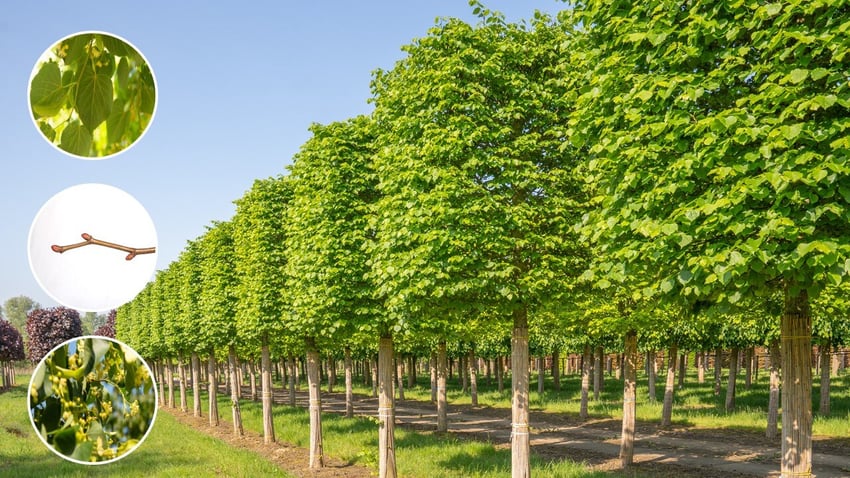Tree in the spotlight: Tilia cordata 'Böhlje'

Tilia cordata 'Böhlje', better known as 'Böhlje' small-leaved lime, is a cultivated variety of the species Tilia cordata and prized for its symmetrical, dense crown. This deciduous tree, originating from Europe, is celebrated for its great vigour and adaptability, making it a popular choice for urban landscapes and parks. As well as its aesthetic appeal, this cultivar is known for its fragrant yellow-white flowers in the summer. This tree is a true bee magnet, thus contributing towards biodiversity. Its tolerance of pollution and its ability to grow in different soil types underline its versatility as an ornamental and functional tree.
Tilia cordata 'Böhlje' (small-leaved lime) is an old German clone (end of the 19th century), which originated from the nursery of the same name in the German town of Westerstede, near Oldenburg. The tree was selected for its regular growth, with a vigorous upright main trunk and a conical canopy. In every respect, therefore, it makes the perfect avenue tree. In its juvenile form, the canopy is narrow, becoming broader with age. As well as its perfect growth habit, there are even more benefits of using this tree. For instance, the fact that the tree is particularly wind-resistant and tolerant of exposure to salty air make it a good option for coastal sites too.
Identification
All lime trees are fairly easy to identify. First of all, the tree is a common European species and has a regular canopy structure. In the case of T. cordata, at the base of the trunk we see a bunch of shoots, similar to root suckers. Limes share the following specific attributes: a slanted leaf base, heart-shaped leaves and seeds arranged in groups with a spherical fruit and a single wing or samara. The most characteristic limes can be found in Germany and this is because limes are deeply rooted in German culture and mythology. Historically, limes were often planted in the centre of villages and served as gathering places, also in the Netherlands. These trees were often the centre of community life where people congregated, amongst other things, for village meetings, markets, festivals and court decisions. The concept of the “Dorflinde” (village lime) is deeply rooted in German culture where it symbolises justice and peace.
Flowers and biodiversity
With its characteristic fragrant flowers, limes add greatly to biodiversity. Who isn’t familiar with linden honey as a summer delicacy? Not only honeybees but also hoverflies and wild bees are attracted to the tree when in flower. The trees are positively abuzz and intoxicated bees can often be found underneath, feverishly gathering nectar and pollen in the summer. Therefore, limes are not simply beautiful and suitable for a range of planting sites but also ecologically valuable.
Application and use
Traditionally, limes were planted a lot alongside quiet roads, lanes and in lime avenues, often found on country estates. Their great vigour, resilience and flexibility of the branches meant the tree was often used a lot as an espalier. Trees were planted around houses and farms for their sun protection properties which were enhanced when pleached to create a natural shading screen! Tilia cordata ‘Böhlje’ can be used in this way too. After the summer, at the end of September, trained trees were pruned and the branches dried, as a winter fodder. Nowadays, use as an espalier is to be regarded more as a way of creating greater privacy and obscuring intrusive buildings. We also see limes being used a lot in mixed native hedges, partly because the young shoots are a varied food source for cattle.



.jpg?length=500&name=Betula%20nigra%20500-600-HM-101220-4-winterbeeld%20(1).jpg)








